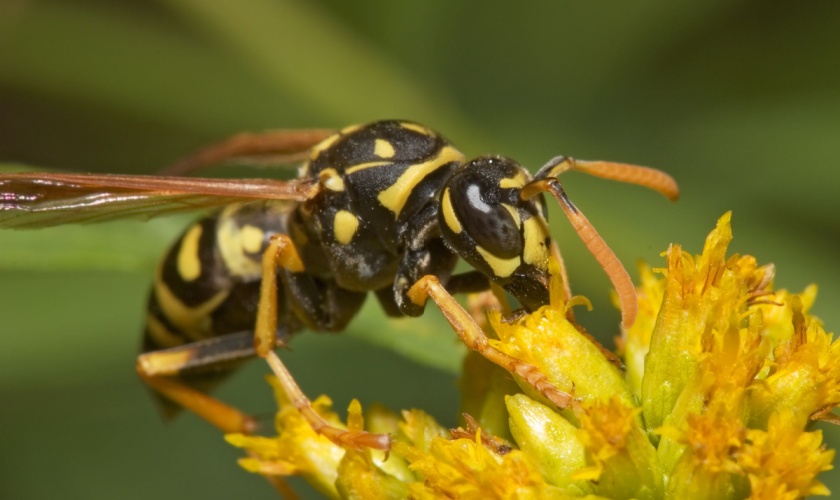In the warm, sunny climate of the South Bay Area, it’s not uncommon to see buzzing insects visiting flowers, flying near trash cans, or even hovering around your outdoor picnic. But not all buzzing insects are the same—and knowing the difference between yellowjackets and honeybees can be crucial for safety and effective pest control.
While both play important roles in their ecosystems, only one is a known aggressor with the potential to become a danger to people and pets. Here’s how to tell yellowjackets and honeybees apart—and when it’s time to call in the professionals at Citra Pest Control.
1. Appearance: Stripes Can Be Deceptive
At first glance, yellowjackets and honeybees may seem similar—they’re both winged insects with striped bodies. But if you take a closer look (from a safe distance), you’ll notice some clear differences.
- Honeybees have fuzzy, rounded bodies. Their coloration is more muted, with golden-brown or tan stripes and soft hairs that help collect pollen.
- Yellowjackets, on the other hand, have sleek, shiny, hairless bodies with bright yellow and black stripes. They are more slender and wasp-like in shape.
The lack of hair and bold coloration of yellowjackets is often the first visual cue that you’re dealing with a more aggressive insect.
2. Behavior: One is Busy, the Other is Bold
Honeybees are gentle pollinators, typically uninterested in humans unless provoked. If you see a bee moving from flower to flower, it’s likely a honeybee focused on gathering nectar and pollen.
Yellowjackets, however, are scavengers. In the South Bay Area, they’re notorious for showing up uninvited at picnics, barbecues, and garbage bins in search of meat, sugary drinks, and other human food. They’re also highly territorial and more likely to sting—repeatedly—when disturbed.
If you notice persistent, aggressive flying around your food or trash, you’re likely dealing with yellowjackets. In this case, contact Citra Pest Control right away to assess the situation and locate any nests.
3. Nesting Habits: Where Do They Live?
Another major difference is where these insects choose to build their nests:
- Honeybees often create wax hives in hollow trees or man-made structures like hive boxes. Their colonies can last for years and are generally well-managed by beekeepers in the area.
- Yellowjackets prefer concealed locations, such as underground burrows, wall voids, attics, or beneath eaves. Their nests are made from a paper-like material, and colonies grow rapidly in the summer months.
Underground nests are especially dangerous because they can go unnoticed until someone accidentally disturbs them—leading to a painful swarm. If you discover a nest or suspect yellowjackets may be nesting on your property, it’s critical to leave removal to the experts at Citra Pest Control.
4. Stinging Potential: Who’s More Dangerous?
Perhaps the biggest reason to learn the difference between honeybees and yellowjackets is safety. Honeybees can only sting once, as they die after stinging. They typically sting only when threatened.
Yellowjackets can sting multiple times and often do so with little warning. Their venom is potent, and multiple stings can cause serious reactions—especially for people who are allergic.
In some cases, yellowjackets will even chase perceived threats away from their nest area. If you or your children are being followed or repeatedly stung, don’t hesitate to seek medical attention—and call Citra Pest Control for professional nest removal and preventative solutions.
5. Ecological Role: Pest or Pollinator?
Honeybees are essential pollinators. They play a vital role in agriculture and the health of natural ecosystems. In fact, many South Bay Area gardeners and farmers rely on honeybees to pollinate fruits, vegetables, and flowers.
Yellowjackets, while beneficial as predators of other insects, are often considered a pest species due to their aggressive behavior and attraction to human food. Once their colonies grow large in late summer, they can become a major safety risk in residential neighborhoods and parks.
If you’re unsure which insect you’re dealing with, Citra Pest Control can help with identification and provide safe, humane solutions based on the species involved.
When to Call for Help
Here in the South Bay Area, it’s not unusual to have both honeybees and yellowjackets on your property. But while honeybees are best left alone—or relocated by a beekeeper—yellowjackets should be addressed immediately by pest control professionals.
At Citra Pest Control, we specialize in safe, effective treatment for stinging insects. If you notice heavy yellowjackets activity, discover a nest, or have had repeated stings on your property, don’t wait. Our licensed technicians will quickly assess the situation and recommend a plan that protects your family and pets.
Tell The Difference and Call the Best Exterminators!
Learning to tell the difference between honeybees and yellowjackets can help you make safer, more informed decisions when you encounter buzzing visitors in your yard or around your home. While bees play an important ecological role, yellowjackets are aggressive scavengers that can pose serious risks—especially in late summer.
If you’re concerned about yellowjackets in your South Bay property, trust Citra Pest Control to handle the problem with care, precision, and local expertise. We’re here to help you enjoy your outdoor space—without the sting.

